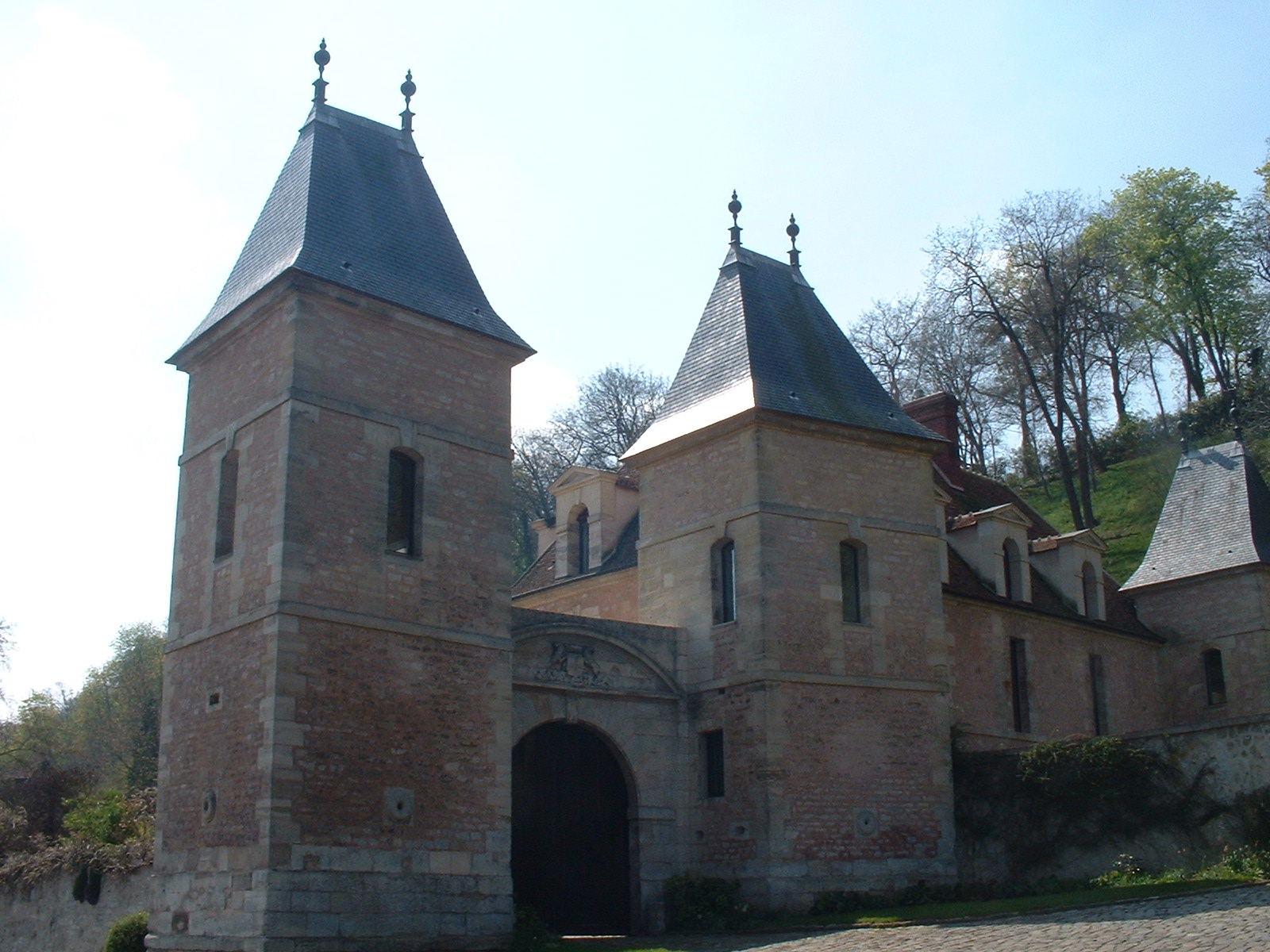connaissance nf (1) savoir la ~ de qch (the) knowledge; (2) (choses connues, science) ~s knowledge; (3) (personne) acquaintance. (4) (conscience, lucidité) consciousness. (5) (loc) à ma/sa/leur ~ to (the best of) my/his/her knowledge, as far as I know...
Friday, August 05, 2005
The Life of the White Ant
This is the Château de Médan, situated in the small town of Médan on a bend of the Seine River to the west of Paris. It was Maeterlinck's home when he wrote 'The Life of the White Ant' in 1926.
Count Maurice Polydore Marie Bernard Maeterlinck was born 29th August 1862 in Ghent, Belgium. He was educated at a Jesuit college and read law, but a short practice as a lawyer in his home town convinced him that he was unfit for the profession. During a stay in Paris, he was drawn towards literature. His dramas later became the outstanding works of Symbolist theatre. In 1911 he was awarded the Nobel Prize for Literature. His prose writing was a blend of occultism, mysticism and interest in nature and represent a reaction against materialism, science and mechanisation. For Maeterlinck, questions of immortality, death and the attainment of wisdom came uppermost
Maeterlinck published several books about nature which are not rigorous works of science or natural history but rather essays in which he set out his philosophy of the human condition. In 1926 he published "La Vie des Termites" (The Life of the White Ant) in which totalitarian systems were examined compared with the life of the termite. This book showed notable similarities to a work published a year earlier called "The Soul of the White Ant" by the South African poet and scientist Eugene Marais. Before the Second World War Maeterlinck escaped to the US but returned to France where he later died 6th May 1949 in Nice.
Eugene Marais was born in Pretoria in 1871. At that time Pretoria was still a frontier town. Marais was a published poet by the age of 12 and by 19 he was the editor of the Afrikaans newspaper Land en Volk. In 1896 he sailed for London to study law and in 1910 he was working as an advocate in Johannesburg. Depression, however, led him to abandon his law practice and he retreated to the remote Waterberge, a mountainous region to the NW of Pretoria. Here he became the first person to make a prolonged study of primates in the wild. He also studied termites. The two creatures seemed to have nothing in common, but both fascinated him. He published his studies of termites as a series of articles in local newspapers, as "The Soul of the White Ant". Firstly, he noticed that the termitarium could be considered as a single organism whose organs work like those of a human being. The queen was the brain and the womb; the workers were mouthparts and tissue builders; the soldiers white blood cells and the humus gardens were the stomach.
(As an aside, Levi-Strauss notes the same kind of geographical and functional organisation in the design of cities built from scratch in the newly explored Brazil. In fact, most human cities show the development of specific regions dedicated to specific functions. And, to spread the net even wider, if we look at the world today, it has started to develop along more or less the same principles: certain countries cultivate their intellectual activities, others are completely dedicated to food production. The countries that specialise in intellectual activities protect themselves from those which nourish the belly through copyright and patent law. In this sense, the Gaia hypothesis which suggests that the world is simply a huge organism also makes sense by comparison with the smaller scale of the termitarium. In this view, the world is just a huge human termitarium...).
Marais observed that the actions within the termitarium were entirely instinctive. He thought natural selection was not, as Darwin had insisted, the survival of the fittest, but rather the line of least resistance. Those species best able to adapt to their specific environment survived, while those not able to, would become extinct. Natural selection, therefore, had the tendency to both localise and specialise species.
In 1926, the year after he published his research about the white ant, Maeterlinck took Marais's works and published it as his own, without reference to the originator of the ideas he presented. This plagiarizing may well have been a major factor in Marais's final collapse. Plagued by ill-health and addiction to morphine, in the summer of 1936, Marais put a shotgun in his mouth and killed himself.
The Nobel prize winner, known for his mystical speculations, who plagiarised and used the white ants for his own ends writes about the LIFE of the white ant. The unknown man who for years studied the natural history of ants and arrived at original ideas fifty years before their time died crushed by the theft of his life's work. He, however, writes of the SOUL of the white ant.
Subscribe to:
Post Comments (Atom)

No comments:
Post a Comment